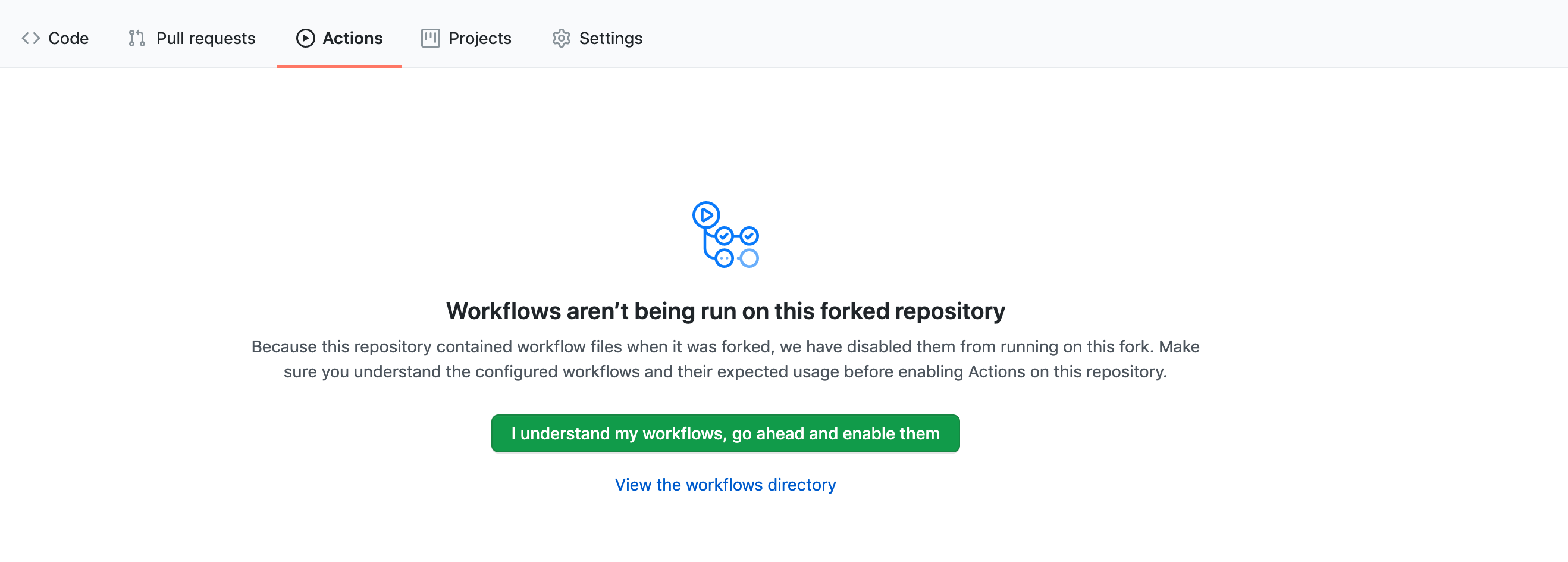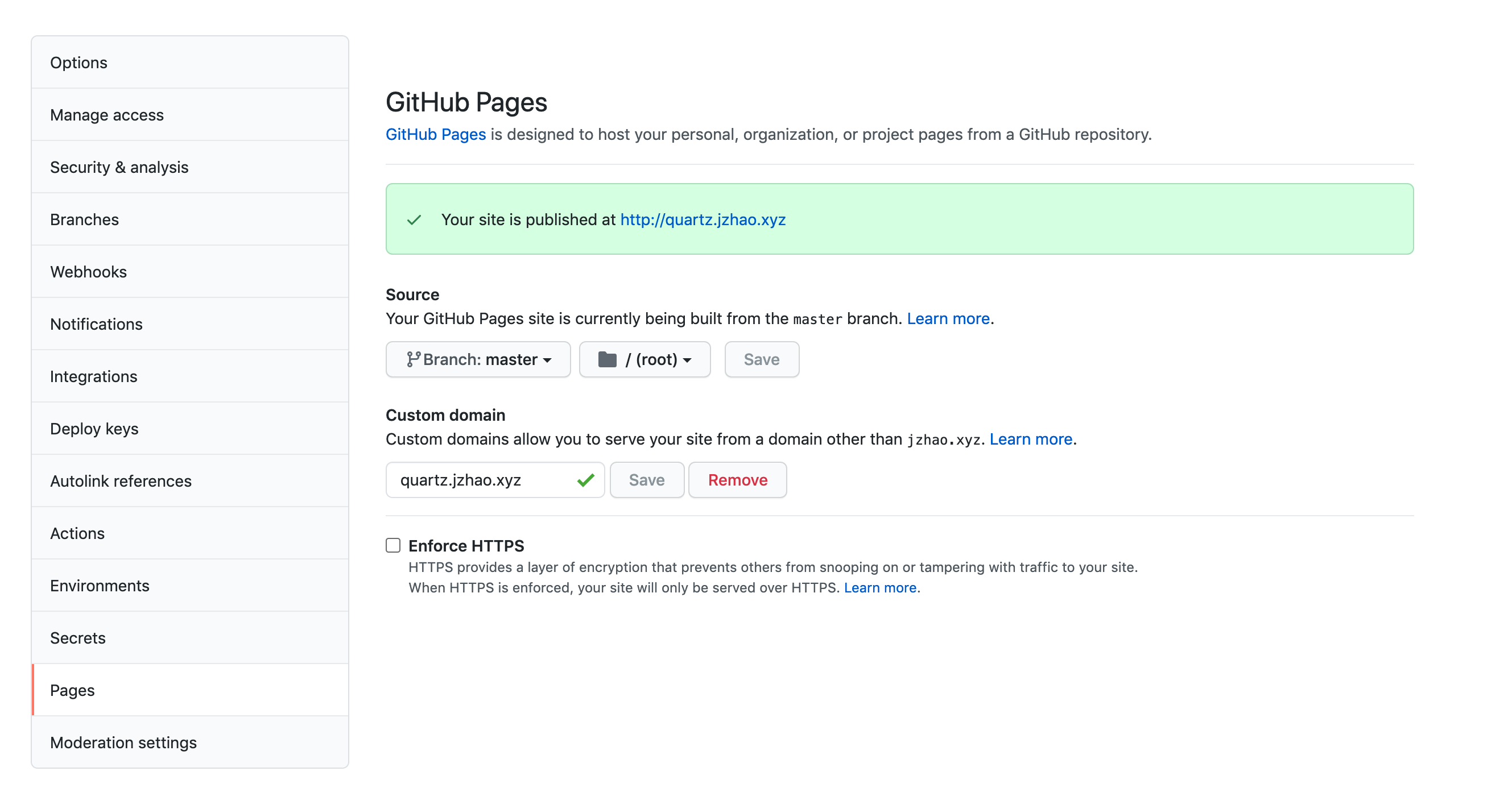Deploying Quartz to the Web
GitHub Pages
Quartz is designed to be effortless to deploy. If you forked and cloned Quartz directly from the repository, everything should already be good to go! You can head to <YOUR-GITHUB-USERNAME.github.io/quartz to see it live.
Enable GitHub Actions
By default, GitHub disables workflows from running automatically on Forked Repostories. Head to the ‘Actions’ tab of your forked repository and Enable Workflows to setup deploying your Quartz site!
 Enable GitHub Actions
Enable GitHub Actions
Enable GitHub Pages
Head to the ‘Settings’ tab of your forked repository and go to the ‘Pages’ tab.
- Set the source to deploy from
masterusing/ (root) - Set a custom domain here if you have one!
 Enable GitHub Pages
Enable GitHub Pages
Pushing Changes
To see your changes on the internet, we need to push it them to GitHub. Quartz is essentially a git repository so updating it is the same workflow as you would follow as normal.
| |
Setting up the Site
Now let’s get this site up and running. Never hosted a site before? No problem. Have a fancy custom domain you already own or want to subdomain your Quartz? That’s easy too.
Here, we take advantage of GitHub’s free page hosting to deploy our site. Change baseURL in /config.toml. If you don’t have a custom domain to use, you can use <YOUR-USERNAME>.github.io (which GitHub gives to you for free!) as your domain.
| |
Change cname in /.github/workflows/deploy.yaml. Again, if you don’t have a custom domain to use, you can use <YOUR-USERNAME>.github.io.
| |
Registrar
This step is only applicable if you are using a custom domain! If you are using <YOUR-USERNAME>.github.io, you can skip this step.
For this last bit to take effect, you also need to create a CNAME record with the DNS provider you register your domain with (i.e. NameCheap, Google Domains).
GitHub has some documentation on this , but the tldr; is to
Go to your forked repository (
github.com/<YOUR-GITHUB-USERNAME>/quartz) settings page and go to the Pages tab. Under “Custom domain”, type your custom domain, then click Save.Go to your DNS Provider and create a CNAME record that points from your domain to
<YOUR-GITHUB-USERNAME.github.io.(yes, with the trailing period). Example Configuration for Quartz
Example Configuration for QuartzWait 30 minutes to an hour for the network changes to kick in.
Done!
External Hosting
Don’t want to use GitHub Pages? Hugo builds everything for you! Everything is a packaged set of static files ready to deploy in /public. You can then upload this folder to a cloud provider to deploy. Alternatively, most providers also give users the option to link a GitHub repository and a folder to deploy. When doing this, ensure you select /public folder under the master branch.
Now that your Quartz is live, let’s figure out how to make Quartz really yours!
Having problems? Checkout our FAQ and Troubleshooting guide .